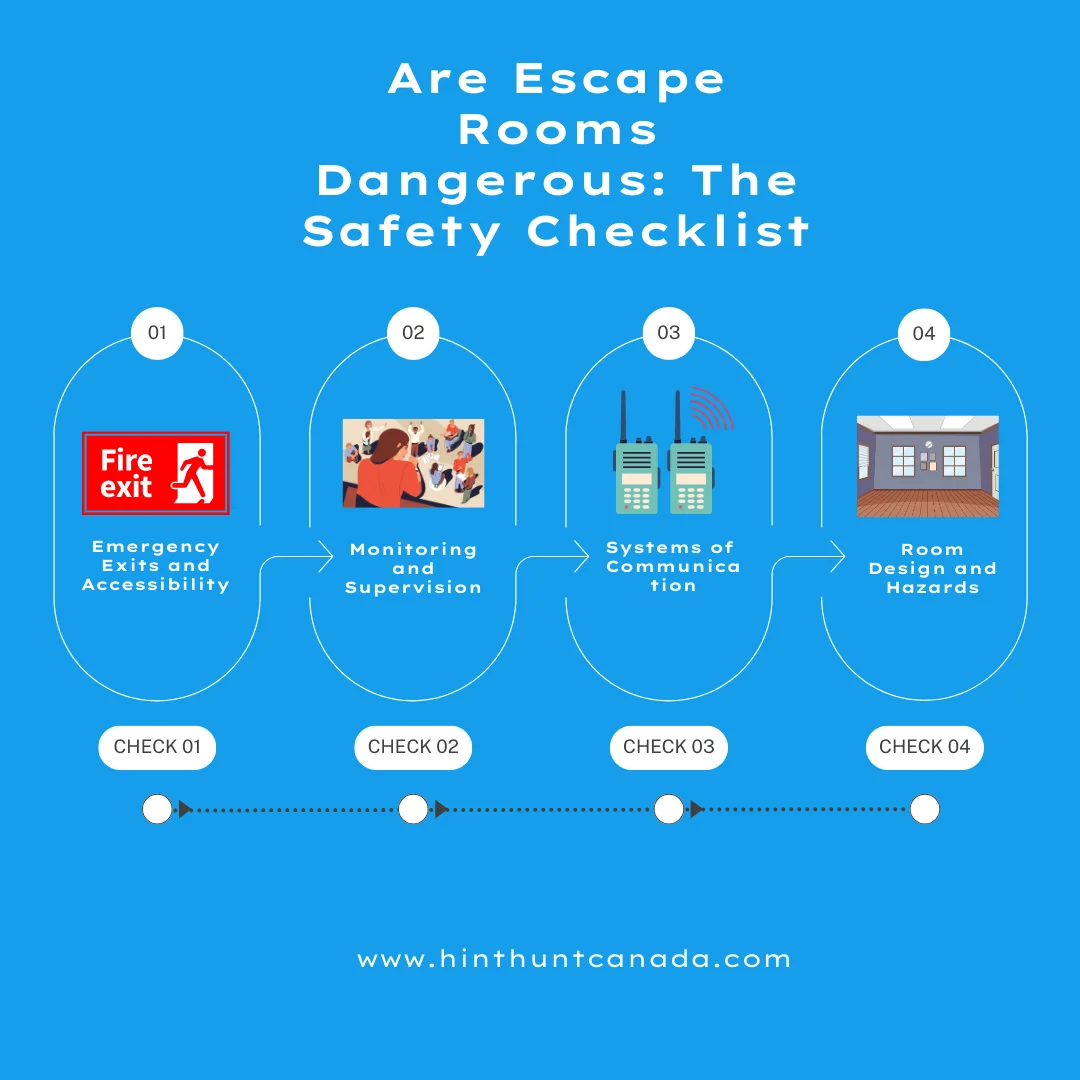In a world that thrives on adrenaline-pumping activities, escape rooms have emerged as the ultimate test of wit and teamwork. These immersive experiences have taken the entertainment industry by storm, offering participants a chance to break free from the mundane and dive headfirst into a thrilling puzzle-solving adventure.
Yet, as the popularity of escape rooms soars, a lingering question persists: are escape rooms dangerous? In this exploration, we’ll dissect the elements of escape rooms, weighing the risks against the rewards, to uncover the truth behind the mystery.
The Hype and Appeal of Escape Rooms
Escape rooms are an ingenious blend of strategy, mystery, and excitement. Participants willingly subject themselves to the challenge of deciphering puzzles, decoding cryptic messages, and navigating through intricately designed spaces—all within a limited timeframe. The allure lies not only in the intellectual stimulation but also in the immersive environments that transport individuals into alternate realities, making them protagonists in their very own suspenseful narratives.
Are Escape Rooms Dangerous: The Safety Checklist

Before understanding “are escape rooms dangerous,” it’s crucial to acknowledge that escape room operators prioritize the safety of their participants.
The vast majority of escape rooms adhere to strict safety standards and guidelines to ensure a secure and enjoyable experience for all. Here’s a checklist of safety measures commonly implemented in reputable escape rooms:
1. Emergency Exits and Accessibility
Escape rooms are required to have clearly marked emergency exits that are easily accessible. Participants should be briefed on these exits before the game begins, ensuring a swift and safe evacuation if necessary.
So, the answer to the question “are escape rooms dangeours” is no based on the exits.
2. Monitoring and Supervision
Many escape rooms have game masters who monitor participants throughout the experience. These individuals are trained to intervene if safety concerns arise and can provide guidance if players become stuck or anxious.
3. Communication Systems
Escape rooms often incorporate communication systems, such as walkie-talkies or intercoms, allowing participants to contact the game master in case of an emergency or if they need assistance.
4. Room Design and Hazards
Escape room designers take precautions to eliminate potential hazards within the space. Sharp objects, tripping hazards, or any elements that could pose a risk are carefully considered and mitigated.
The Psychological Challenge: Are Escape Rooms Dangerous?
While physical safety is a top priority, escape rooms also present a unique psychological challenge. Participants may experience a heightened sense of urgency, the thrill of the unknown, and the pressure to solve puzzles under time constraints.
While these elements contribute to the immersive experience, it’s crucial for individuals to be aware of their own comfort levels and communicate any concerns to the game master.
The Myth of Claustrophobia
One concern often associated with answering “are escape rooms dangerous,” is claustrophobia. The fear of confined spaces can be a legitimate worry for some individuals, but it’s essential to differentiate between perception and reality.
Escape rooms come in various sizes and designs, and operators typically provide information about the space’s dimensions to help participants make informed decisions based on their comfort levels.
Are Escape Rooms Dangerous: Personal Responsibility in Escape Rooms

While escape room operators take extensive measures to ensure safety, participants also bear a level of responsibility.
So, if you want an answer to “are escape rooms dangerous,” It’s essential for you to play your part, which includes the following:
1. Follow Rules and Guidelines
Adhering to the rules and guidelines provided by the escape room operator is paramount. These instructions are designed to enhance safety and ensure a positive experience for everyone involved.
2. Communicate Concerns
If a participant feels uncomfortable or encounters any issues during the experience, they should communicate with the game master immediately. Escape room staff are there to assist and address any concerns promptly.
3. Know Your Limits
Everyone has different comfort levels and thresholds for excitement. Knowing one’s limits and communicating them to the team and game master is crucial for a safe and enjoyable experience.
FAQs
Is it safe to go to an escape room?
First-time players may be worried that they will be in danger if they don’t play the game correctly. In actuality, companies design escape rooms to be safe for the players. Before you start solving the room, the gamemaster outlines the rules, which, of course, you’ll want to follow.
Do they actually lock you in escape rooms?
Players are not truly locked in, safety measures and emergency exits are crucial for ensuring a safe and enjoyable experience.
Are escape rooms problem-solving?
Escape rooms can boost skills in communication, project management, problem solving, and dealing with complex challenges.
How many people fail escape rooms?
70 to 85% of participants fail to solve the escape room!
Conclusion: Are Escape Rooms Dangerous?
No. Instead, escape rooms offer daring adventurers a chance to unlock the mysteries of imagination, collaboration, and exhilarating fun. As the door creaks open and the countdown begins, participants step into a world where danger is nothing but a well-crafted illusion, and the real challenge lies in the art of escape.

